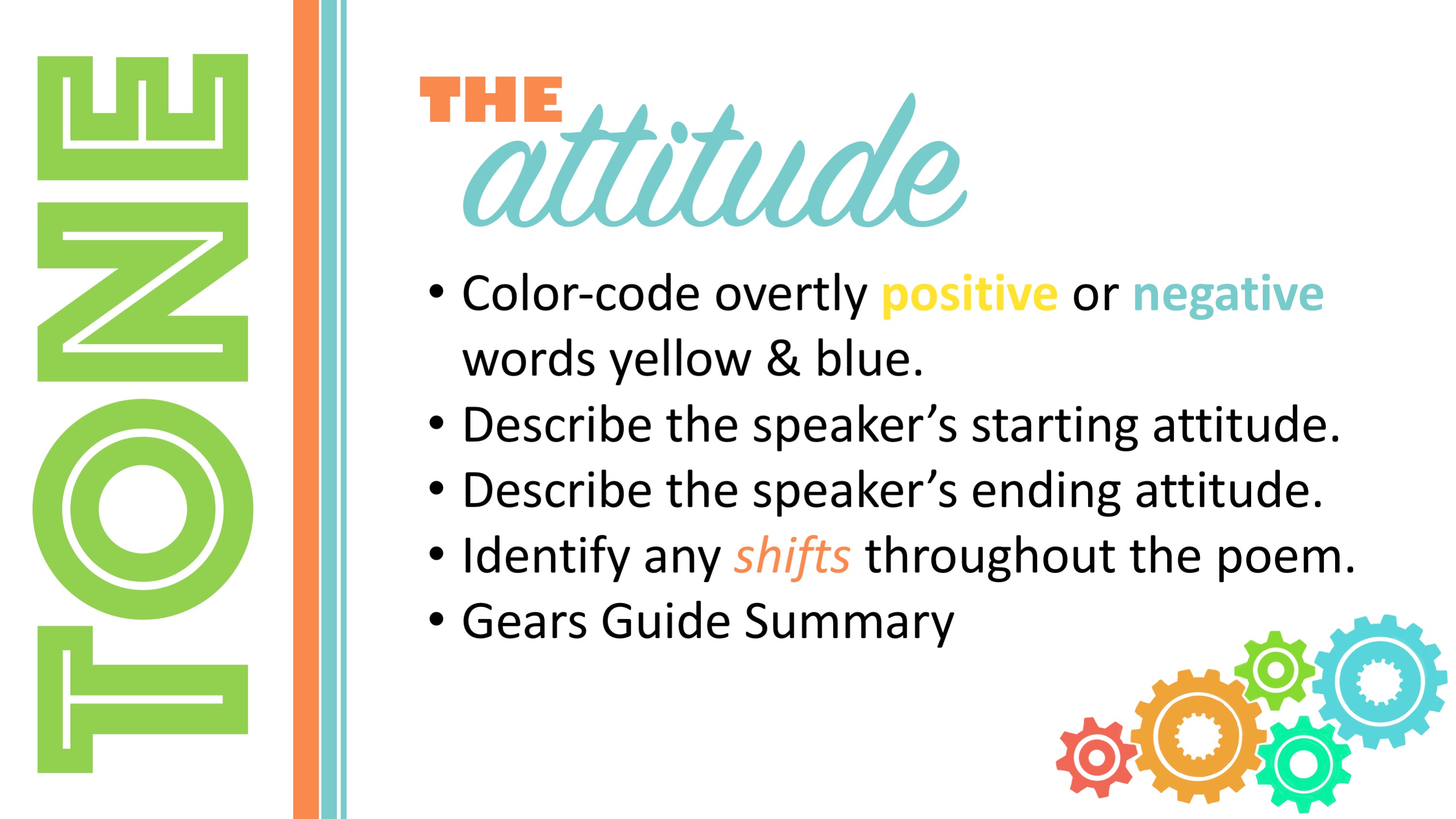Story Enthusiast. Wordsmith. Literacy Coach. Discernment Developer.
How fitting to find so many synonyms for an English teacher!
So what has this English teacher been creating lately? After collaborating with fellow lovers of language and literature over the past year, I’m eager to roll out a few new resources!
Tackling this poetry unit with a fresh approach that reduces intimidation barriers and utilizes best practices for student-led learning inspired a heightened appreciation for the art of evaluation and interpretation. Plus…so many fun colors!


Navigating poetry analysis with secondary students stirs natural enthusiasm for some while provoking groans from others. The Fab 5 Framework build on the traditional TP-CASTT process with the utilization of graphic organizers, color-coding, and student-directed discussions. Utilizing the imagery of gears to illustrate how each component impacts and connects with the next while highlighting literacy ‘tools’ helps engage both left and right brain learners. Integrating multiple “Collaborative Conferences” strengthens analysis ability and communication skills. It includes poetry from a variety of time periods and cultures with built-in strategies for differentiated instruction and assessment. Can you tell I’m pretty pumped for this unit?!
What else am I working on?
Let’s talk TQC’s. Rather than driving the agenda of text-analysis with provided reading comprehension questions, TQC’s invite a student to identify their own thoughts, questions, and connections resulting in a more genuine and engaged participation with a text. This student-led exploration and discovery enhances authentic discussion with peers. A thought, question, or connection that stood out to one student helps inform the perspective of others and promotes a culture of collaboration. My recent learning via a graduate course on literacy with Davenport University encouraged a few revisions which I LOVE!
I also LOVE that TQC worksheets apply to any type of text. I can incorporate them into essay analysis with my secondary English classes as well as hermeneutic practice with Bible students.
In fact, I’ve incorporated them into a developing journey for secondary students through the biblical book of Titus:
– The Hermeneutics Highway –
- Preliminary Pieces (Fill in the GAAP: Genre, Author, Audience, & Purpose)
- Content Clues (Keywords, Connectors, & Contrasts…Oh, my!)
- TQC’s (See above!)
- Cultural and Linguistic Lens (Seeing it the way they saw it)
- Timeless Truths
- Illumination: How does this impact our thinking?
- Inspiration: How does this impact our feeling?
- Application: How does this impact our doing?

The Hermeneutics Highway illustrates the importance of these five “pullover points” and their influence on interpretation. Exploring each one leads to deeper discovery on a passage’s authentic relevance and relates timeless truths to our thinking, feeling, and doing. And yes, there’s plenty of doodle-inspiring graphic organizers for our visual and spatial learners!
So, there you have it. That’s a few snapshots capturing what this teacher’s been up to in the 2019/2020 season!
“Therefore, my beloved brethren, be steadfast, immovable, always abounding in the work of the Lord, knowing that your labor is not in vain in the Lord.”
1 Corinthians 15:58




